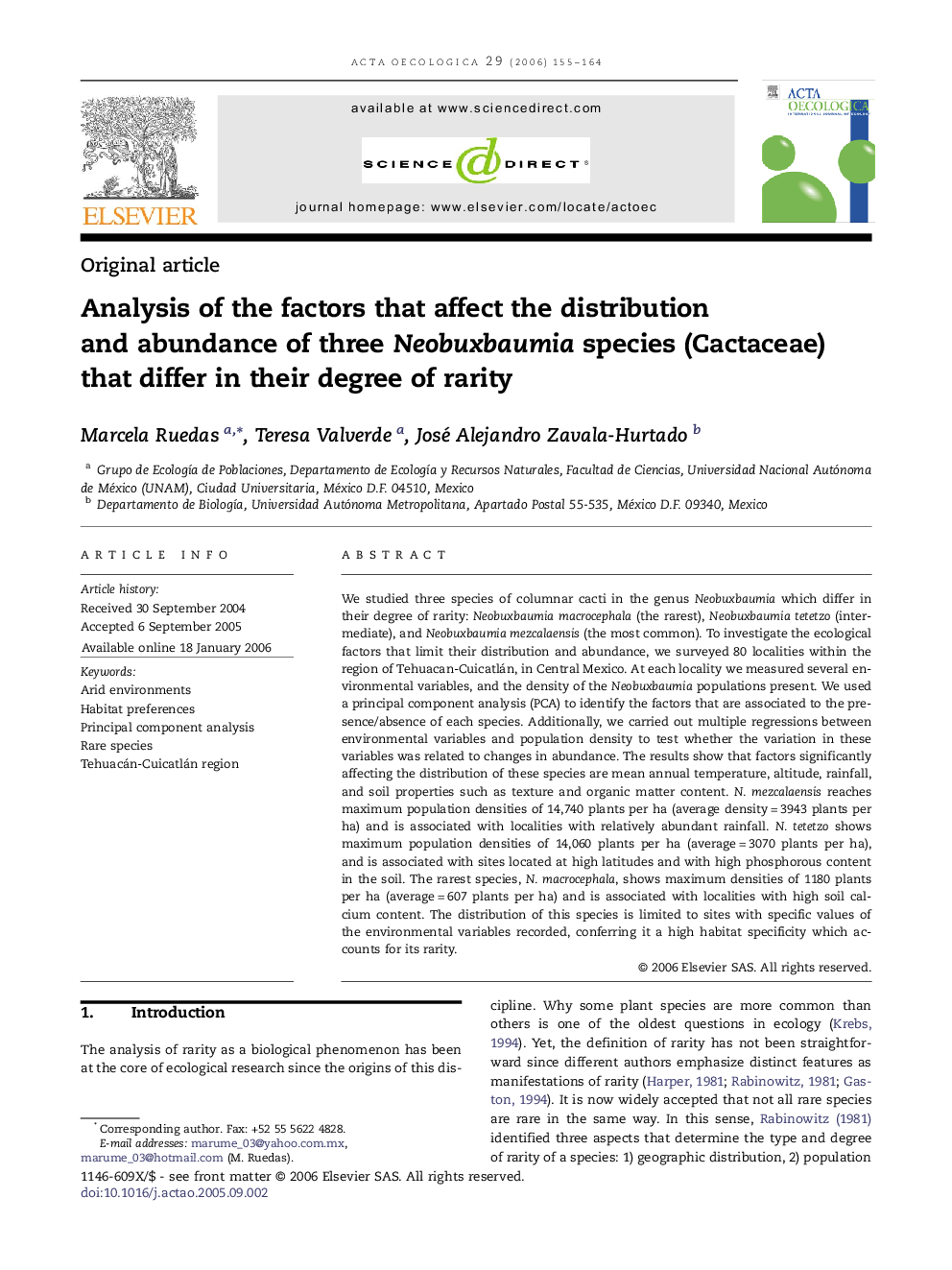| Article ID | Journal | Published Year | Pages | File Type |
|---|---|---|---|---|
| 4381314 | Acta Oecologica | 2006 | 10 Pages |
We studied three species of columnar cacti in the genus Neobuxbaumia which differ in their degree of rarity: Neobuxbaumia macrocephala (the rarest), Neobuxbaumia tetetzo (intermediate), and Neobuxbaumia mezcalaensis (the most common). To investigate the ecological factors that limit their distribution and abundance, we surveyed 80 localities within the region of Tehuacan-Cuicatlán, in Central Mexico. At each locality we measured several environmental variables, and the density of the Neobuxbaumia populations present. We used a principal component analysis (PCA) to identify the factors that are associated to the presence/absence of each species. Additionally, we carried out multiple regressions between environmental variables and population density to test whether the variation in these variables was related to changes in abundance. The results show that factors significantly affecting the distribution of these species are mean annual temperature, altitude, rainfall, and soil properties such as texture and organic matter content. N. mezcalaensis reaches maximum population densities of 14,740 plants per ha (average density = 3943 plants per ha) and is associated with localities with relatively abundant rainfall. N. tetetzo shows maximum population densities of 14,060 plants per ha (average = 3070 plants per ha), and is associated with sites located at high latitudes and with high phosphorous content in the soil. The rarest species, N. macrocephala, shows maximum densities of 1180 plants per ha (average = 607 plants per ha) and is associated with localities with high soil calcium content. The distribution of this species is limited to sites with specific values of the environmental variables recorded, conferring it a high habitat specificity which accounts for its rarity.
